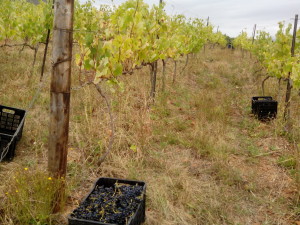As Nature Would Have it

The term organic is rather interesting in our African context: either you don’t really consider it because essentially all the farming and produce you interact with is grown “naturally” with minimal chemical additives; or its attached to conspicuously higher prices with produce that often looks “deformed” in that they are not modified to look picture perfect, and are in a large sense associated with the import or export market.
It translates almost perfectly into wine, with only minor differences. Wine is generally a result of two processes: viticulture (growing of the grapes) and viniculture (turning grapes into wine). As with other organic agriculture, organic viticulture requires the vines to be grown with as little agrochemical additions as possible: intrinsically using only what occurs naturally. The main reason for this frame of thinking is to ensure sustainable farming where the land and its environs stay continuously healthy, and that no harmful chemicals that are administered in the vineyard are carried through to the end consumer in the finished wine.
An array of practices are employed in the vineyards to this end. These include the use of compost and manure as fertilizers allowing for microbial activity within the soils; planting or allowing cover crops among the vines to promote polyculture where the biological diversity of the ecosystem is encouraged; the use of natural predators to control pests; using canopy management to make sure sufficient ventilation among the vines prevents rot or fungal growth; and the informed choice of rootstocks (roots of vines are commonly different species to the rest of the plant that bears the grapes. This is achieved by grafting. Find quick explanation here) and clones (vines from the same grape variety but exhibiting different mutations that can be matched to excel in specific conditions or locations) to plant that suit the specifics of the site. Spraying of some chemical substances such as copper solutions to combat fungal and bacterial diseases are allowed in some regions depending on the certifying body in charge. It is found that as other flora and fauna are encouraged to compete with vines for nutrient resources, yields are considerably lower than in conventional farming, which raises costs. Lastly, climate can play an important role as warm and dry conditions are less prone to disease thereby requiring less intervention.
Organic grapes are the end product of organic viticulture. They, however, do not necessarily turn into organic wine. The processes in the cellar, viniculture, also need to be “organic”; but consensus about what this constitutes is frequently disputed by differing certifying bodies. Fundamentally, most chemical additions are forbidden, where only naturally grown compounds may be used. So with regards to Sulphur Dioxide, it can be added at various stages to prevent oxidation, kill off bacteria and inhibit wild yeast; though in strict minimal quantities. (Note: Sulphur dioxide is used extensively in the food and drinks industries as a preservative. Additionally, Sulphites, which is a catch-all term for compounds containing the negatively charged sulphite ions, occur naturally during fermentation. Finally, some certifying bodies prohibit any Sulphur Dioxide additions; nonetheless, wines produced in this way have questionable longevity potential.) Fining agents (materials added to wine to clarify and stabilise it by attracting molecules and precipitating out of solution) are also limited to particular compounds such as egg whites, bentonite and edible gelatine. Filtration is similarly often kept to a bare minimum. Some of the certifying body dependent regulations can be absurd in that they have no scientific or “natural” implication, such as banning centrifuging. Though, that can be expected with most (read all) regulatory bodies out there.
Historically, Organic wines have had a negative reputation with regard to quality, although having tasted a few local expressions recently, I would strongly beg to differ. In particular, I tried out Reyneke (whose reserve white and red are insanely good. And for full disclosures sake, they are actually biodynamic which is a whole different ball game as they, in addition, follow moon and star cycles to determine when certain procedures should be carried out), The Hughes Family Nativo Wines (the red in particular, a great buy) and Avondale (whose Cyclus and Anima I took a particular liking to).
The industry is moving towards more natural and vineyard focused wine making as consumers become more aware of what they ingest and corporate images become as important as the product being flogged. I believe this will only boost the organic wine scene with greater understanding and veneration of the fruit…
#GoingOrganic

Tom , this is very scientific. I am proud of you!!!
Haha. You sound almost surprised. Thanks dad. That means a lot.